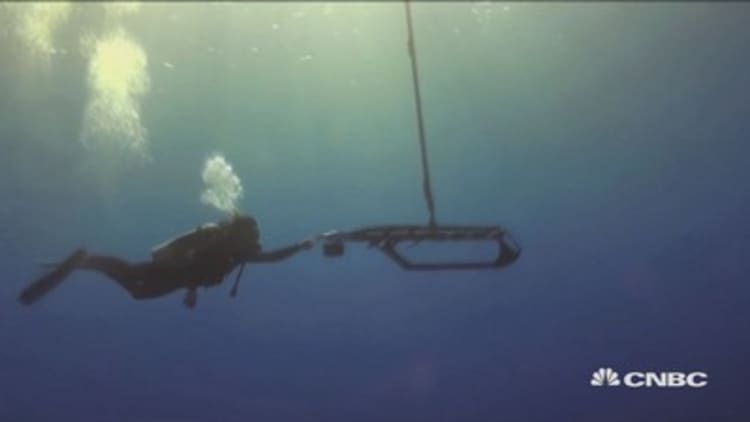
For something that covers over two-thirds of the Earth's surface, it's surprising how little we know about the world's oceans. The United States' National Oceanic and Atmospheric Administration states that over 95 percent of "the underwater world" has yet to be explored.
California based Liquid Robotics is a company looking to use renewable energy as a tool to further our knowledge of the ocean.
"We know more about space than we do about the ocean, and yet we have trillions of dollars of commerce that travel through our oceans," Gary Gysin, President and CEO of Liquid Robotics, told CNBC's Sustainable Energy.
Read MoreHow can you bottle sunshine?
"80 percent of our oxygen comes from the oceans, one in six people get their protein source from the ocean, and yet we don't know that much about it," Gysin added.
Carrying out marine research with boats and submarines can be costly, labor-intensive and sometimes dangerous.
Liquid Robotics hope that their Wave Gliders will herald a change in the way that this kind of research is conducted. Wave Gliders are autonomous marine robots containing a 'hybrid power and propulsion system' that uses solar and wave powered energy to operate.
It is this system which allows the craft to carry out research even when conditions are less than favorable, when currents are high or during cyclones and hurricanes, for example.
The data collected by the Wave Gliders includes wave heights, wind speed, temperatures and information about currents, according to Gysin.
"We've actually been through 16 hurricanes and cyclones over the course of the deployment of Wave Gliders and we're collecting data in real time to let people know what's actually happening on the ocean's surface," he said.
Last summer, a Wave Glider in Asia managed to collect weather data during Typhoon Rammasun, where winds reached 145mph and waves topped 45 feet in height.
According to a release from Liquid Robotics, the remote controlled Wave Glider was able to collect and transmit, "vital and rare, real time wave, temperature, conductivity and current data all from the surface of the ocean."
Read MoreCan fossil fuels ever be 'guilt-free'?
Roger Hine is the CTO of Liquid Robotics. "Robotics are going to really change the way humans interact with the ocean, and we're at the front edge of that, there's a tremendous amount of future for unmanned systems in the ocean… in part because of the fact that we can solve this energy problem and leave them out there for long periods of time."
Hine went on to add that the potential of 'ocean drones' is considerable. "People need to come home to their families, ships run out of fuel," he said. "Robots like this can continue to operate for long periods of time and they will really allow humans to do new things in the ocean and to understand the ocean in a way that we've never been able to before."




